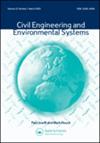Behavioural science applied to risk-based decision processes: a case study for earthquake prone buildings in New Zealand
IF 1.1
3区 工程技术
Q3 ENGINEERING, CIVIL
引用次数: 0
Abstract
ABSTRACT Policy and technical guidance are only as good as their implementation. Often well-meaning legislation has unintended consequences, as individuals and organisations overlay their own risk perceptions and understanding to an issue. This paper illustrates how behavioural science can be applied to risk-based engineering decisions to improve decision outcomes. It is framed around an analysis of the management of earthquake prone public buildings in New Zealand. It demonstrates how the individual, social and cultural contexts can influence how risks and impacts are perceived, evaluated, and communicated. The framing of the decision, unconscious biases, cognitive limitations, trust, and other social influences are all critical factors in translation of technical policy to effective outcomes.行为科学应用于基于风险的决策过程:新西兰地震易发建筑的案例研究
政策和技术指导的好坏取决于政策和技术指导的实施。通常,善意的立法会带来意想不到的后果,因为个人和组织将自己的风险感知和理解叠加在一个问题上。本文阐述了如何将行为科学应用于基于风险的工程决策以改善决策结果。它围绕着对新西兰地震易发公共建筑管理的分析而展开。它展示了个人、社会和文化背景如何影响风险和影响的感知、评估和沟通方式。决策框架、无意识偏见、认知限制、信任和其他社会影响都是将技术政策转化为有效结果的关键因素。
本文章由计算机程序翻译,如有差异,请以英文原文为准。
求助全文
约1分钟内获得全文
求助全文
来源期刊

Civil Engineering and Environmental Systems
工程技术-工程:土木
CiteScore
3.30
自引率
16.70%
发文量
10
审稿时长
>12 weeks
期刊介绍:
Civil Engineering and Environmental Systems is devoted to the advancement of systems thinking and systems techniques throughout systems engineering, environmental engineering decision-making, and engineering management. We do this by publishing the practical applications and developments of "hard" and "soft" systems techniques and thinking.
Submissions that allow for better analysis of civil engineering and environmental systems might look at:
-Civil Engineering optimization
-Risk assessment in engineering
-Civil engineering decision analysis
-System identification in engineering
-Civil engineering numerical simulation
-Uncertainty modelling in engineering
-Qualitative modelling of complex engineering systems
 求助内容:
求助内容: 应助结果提醒方式:
应助结果提醒方式:


